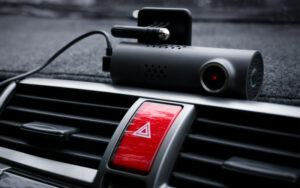Dash cameras have become an integral part of modern vehicle setups, offering a layer of security and accountability on the road. One crucial aspect of these cameras is their Dash Cam Storage Options. With two primary choices, SD cards and cloud storage. Understanding the nuances between these options is pivotal for making an informed decision regarding your dash cam setup.
In recent years, dash cams have gained immense popularity among drivers due to their ability to record incidents on the road. These compact cameras are installed on vehicle dashboards and continuously record footage while driving. Their significance extends beyond capturing stunning scenic routes. They serve as reliable witnesses in case of accidents or unforeseen events.
Understanding Dash Cam Storage Options.
Contents
- 1 Understanding Dash Cam Storage Options.
- 2 SD Cards for Dash Cams.
- 3 Cloud Storage for Dash Cams.
- 4 Comparison: SD Cards vs. Cloud for Dash Cams.
- 5 Is cloud storage better than an SD card?
- 5.1 Which memory card is best for a dash cam?
- 5.2 How long does a 256GB SD card last in a dash cam?
- 5.3 How long will a 32GB SD card record on a dash cam?
- 5.4 How long does a 128GB SD card last in a dash cam?
- 5.5 How many GB should a dash cam have?
- 5.6 How do you store dash cam footage?
- 5.7 Can you put a bigger SD card in a dash cam?
- 5.8 Summary Of Dash Cam Storage Options.
- 5.9 FAQs:
- 5.10 Which is more secure: SD cards or cloud storage for dash cams?
- 5.11 Are there any ongoing costs associated with using cloud storage for dash cams?
- 5.12 Can I use both SD cards and cloud storage simultaneously for my dash cam?
- 5.13 Do dash cams with cloud storage require a constant internet connection?
- 5.14 What factors should I consider when deciding between SD cards and cloud storage for my dash cam?
Dash cams store recorded footage in various ways, with the choice of storage impacting accessibility, reliability, and convenience. Among the available options, two stand out. SD cards and cloud storage.
SD Cards for Dash Cams.
These SD cards have long been a popular choice for dash cam storage options. Their advantages include affordability, ease of use, and immediate access to footage. However, limitations such as storage capacity and vulnerability to damage or theft warrant careful consideration.
Cloud Storage for Dash Cams.
On the other hand, cloud storage offers an enticing alternative. It ensures seamless accessibility to footage from any location with internet connectivity. This eliminates the risk of footage loss due to physical damage or theft. Yet, it may pose concerns regarding subscription costs and reliance on a stable internet connection.
Comparison: SD Cards vs. Cloud for Dash Cams.
When comparing these options, several factors come into play. Storage capacity, accessibility, data security, and reliability are crucial considerations. While SD cards offer tangible ownership and immediate access, cloud storage provides flexibility and security. Understanding the differences is essential to make an informed decision.
Factors Influencing Choice.
The decision between SD cards and cloud storage hinges on individual preferences. Factors like storage needs, budget constraints, connectivity, and reliability play a significant role. Users must assess their priorities and evaluate which option aligns best with their requirements.
Making an Informed Decision.
Choosing the suitable storage option for a dash cam involves weighing the pros and cons of SD cards and cloud storage. A careful assessment of individual needs and preferences will lead to a more satisfactory and effective choice.
Pros and Cons of Dash Cam Storage Options.
SD Cards
Pros.
-
- Immediate Access. SD cards offer instant access to stored data without relying on an internet connection.
- Cost-Effective. They are a one-time purchase without ongoing subscription fees, making them a cost-effective storage solution.
- Physical Control. Users have physical control over SD cards, reducing the risk of unauthorized access or hacking.
- No Internet Dependency. SD cards function independently of internet availability, ensuring accessibility in remote areas or areas with poor connectivity.
Cons.
-
- Prone to Damage or Loss. SD cards can be easily damaged, corrupted, or lost, leading to potential data loss.
- Limited Storage. The storage capacity of SD cards is finite and might require frequent swapping or larger capacity cards for extended recording needs.
- No Remote Access or Backup. There’s no remote access to data stored on an SD card, and if the card is lost or damaged, the data might be irretrievable without backups.

Cloud Storage.
Pros.
-
- Remote Access. Cloud storage allows users to access data from anywhere with an internet connection, offering convenience and flexibility.
- Backup and Redundancy. Data stored in the cloud is often backed up and redundant, reducing the risk of data loss due to physical damage or loss of hardware.
- Scalability. Cloud storage services often offer scalable storage options, allowing users to increase capacity as needed.
- Enhanced Security Measures. Reputable cloud storage providers implement robust security measures like encryption and access controls to protect data.
Cons.
-
- Subscription Costs. Many cloud storage services involve subscription-based models, incurring ongoing costs.
- Internet Dependency. Access to cloud-stored data requires a reliable internet connection, limiting accessibility in areas with poor connectivity.
- Potential Security Risks. Despite security measures, cloud storage can be vulnerable to hacking or service outages, posing risks to data security and privacy.
- Limited Control. Users have limited physical control over data stored in the cloud, relying on the service provider’s infrastructure and policies.

Understanding these pros and cons can help in making an informed decision about which storage method best suits specific needs and preferences.
Is cloud storage better than an SD card?
Cloud storage and SD cards each have their advantages. Cloud storage offers accessibility from anywhere with an internet connection, safeguarding against physical damage or loss. It’s ideal for backup and sharing. However, it relies on internet availability and can incur subscription costs for larger storage needs. SD cards provide immediate access without internet dependency but are susceptible to damage or loss. For security and reliability, a combination of both might be optimal: SD cards for immediate access and cloud storage for backups.
Which memory card is best for a dash cam?
Dash cams require durable, high-capacity cards designed for continuous recording. Look for cards labeled as “high endurance” or “designed for dash cams.” Brands like SanDisk High Endurance or Samsung PRO Endurance are often recommended due to their reliability under constant write cycles.
How long does a 256GB SD card last in a dash cam?
The recording duration on a 256GB card depends on the dash cam’s video quality and compression. Generally, with a 1080p resolution, it might store around 40-50 hours of footage.
How long will a 32GB SD card record on a dash cam?
A 32GB card at 1080p resolution might store about 4-5 hours of footage. Lower resolution settings or different compression can alter these estimates.
How long does a 128GB SD card last in a dash cam?
A 128GB card at 1080p resolution might store around 20-25 hours of footage.
How many GB should a dash cam have?
The GB requirement depends on how much footage you wish to store. For daily use, a 64GB to 128GB card is often sufficient. However, if you require longer recording durations, a 256GB card or larger might be preferable.
How do you store dash cam footage?
Dash cam footage can be stored on the SD card inserted into the dash cam. Some dash cams also have built-in Wi-Fi or apps that allow transferring footage to a smartphone or computer. For long-term storage, backing up footage to a computer or external hard drive is advisable.
Can you put a bigger SD card in a dash cam?
Most dash cams have a maximum supported capacity for SD cards. Refer to the manufacturer’s specifications to ensure compatibility before using a larger SD card. If the dash cam supports larger capacities, you can use a bigger SD card for extended recording.
Summary Of Dash Cam Storage Options.
The choice between SD cards and cloud storage for dash cams boils down to individual needs and preferences. Each option presents unique advantages and limitations, making it crucial for users to evaluate their requirements thoroughly before making a decision.
FAQs:
Are there any ongoing costs associated with using cloud storage for dash cams?
Yes, many cloud storage services for dash cams have subscription-based models. Basic plans may offer limited storage, while premium plans with more extensive storage and features often involve monthly or annual fees. Consider these costs when opting for cloud storage.
Can I use both SD cards and cloud storage simultaneously for my dash cam?
Some advanced dash cams allow simultaneous recording to both SD cards and cloud storage. However, this often requires specific models that support this feature. Check the dash cam's specifications or consult the manufacturer to confirm this capability.
Do dash cams with cloud storage require a constant internet connection?
Dash cams with cloud storage capabilities generally need an internet connection to upload footage to the cloud. However, not all functions may require constant connectivity. Some cams may store footage locally and upload when connected, while others might need a constant connection for real-time backups or remote access.
What factors should I consider when deciding between SD cards and cloud storage for my dash cam?
Consider factors like accessibility, security, cost, and reliability. SD cards offer immediate access, are cost-effective, and have no ongoing fees but are prone to physical damage or loss. Cloud storage provides remote access, backup, and greater security but might have subscription costs and relies on internet connectivity. Opting for a mix can offer both immediate access (SD card) and remote backup (cloud storage) for added security. Assess your preferences and needs before deciding on the storage method.
Thanks For Visiting…
On the look out for a new Dash Cam, but not sure which one?
Looking for top of the market, see our Vantrue N4 Pro Dash Cam Review. Video Quality is the best, sound and many other feature.
Don’t won’t to see all the ugly wires, see our Vantrue N2S Wireless Dash Cam Review. Main feature is being wireless.
Need something good that fit a lower budget, see our ORSKEY Dash Cam Review. Great on price, yet still a good Dash Cam.




